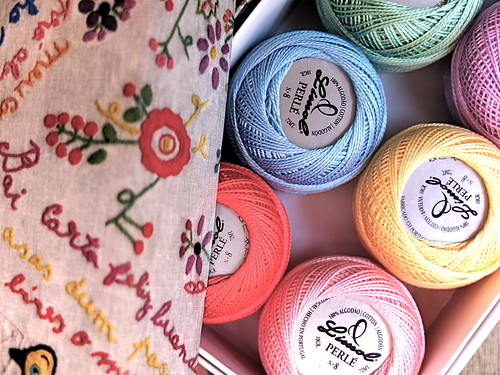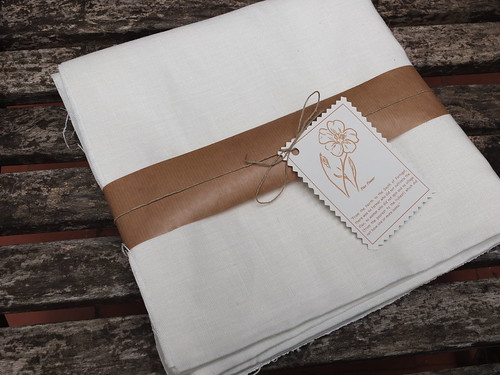Since the beginning, we had in our mind that we should "impregnate" both panels with our Portuguese embroidery soul... And that was the reason why we decided to choose, as much as possible, the stitches that are the most traditional in our regional embroideries... And that ended to be a great decision...
All the great choices belonged to Méri Almeida and Sofia Amaral M who led this giant effort of many embroiderer volunteers.
At the center of both panels, to fill in the cask, the most popular stitch from Castelo Branco Embroidery was used: "frouxo" stitch (frouxo means "loose), Castelo Branco Stitch or Oriental stitch - different designations for the same stitch profusely used in this silk embroidery but that ended being perfect in wool embroidery. Agulhas da Meri suggests this link about this type of embroidery that can be called laid-work.
But there were many others... Like the Portuguese stem stitch decorating the end of the cask on the Lisbon's panel or the four corners using four different stitches from Castelo Branco's embroidery.
At some point the embroiderers from Lisbon noticed that the wool yarn would not be enough to finish the four corners as it was supposed to. There would be slight differences in the colors... What seemed to be a problem, ended in such a great opportunity to enrich the panel... And four different stitches ended up decorating each corner of the panel, illustrating the richness and beauty of our Castelo Branco embroidery. Beginning bottom right and going clockwise we have: rede torcida (twisted net); pé de galo (cocksfoot); velhinhas (old ladies); crivo fingido (pretended openwork) (note: the designations in English are literal translations and not the real name of the stitches).
It was a very simple pattern, but at the end we had a beautiful panel, so balanced with the stitches' choice for the center and the corners...
 |
| Lisbon's panel and its four Castelo Branco's corners |
And the same effort happened in Oporto. The bullion knot, (ponto canutilho) very popular in many Portuguese embroideries from the North of the country and the "soul" of Guimarães Embroidery, beautifully filled in the white wig and one of the Castelo Branco's Stitches brought color and texture to the vine leaf. The choice for the bushy mustache was brilliant: the velvet stitch, from Guimarães Embroidery, was everything George Sandeman needed... And the Grilhão Stitch (Palestrina Stitch), very present in Caldas da Rainha Embroidery (and in so many others...), was perfect to fasten the mast of the Rabelo's boat.
 |
| Portuguese embroidery on a Scottish design, two countries on a panel. |
We ended this journey between Portugal and Scotland on the tip of a needle celebrating with Porto Wine... and we are already feeling saudade, such a Portuguese "mood"...
 |
| Wine Port, Portugal and Scotland, a journey on the tip of a needle... |
Don't forget to check the Scottish Diaspora Tapestry, once each day new panels are arriving from all around the world with incredible examples of beautiful wool embroidery...








.jpg)




















